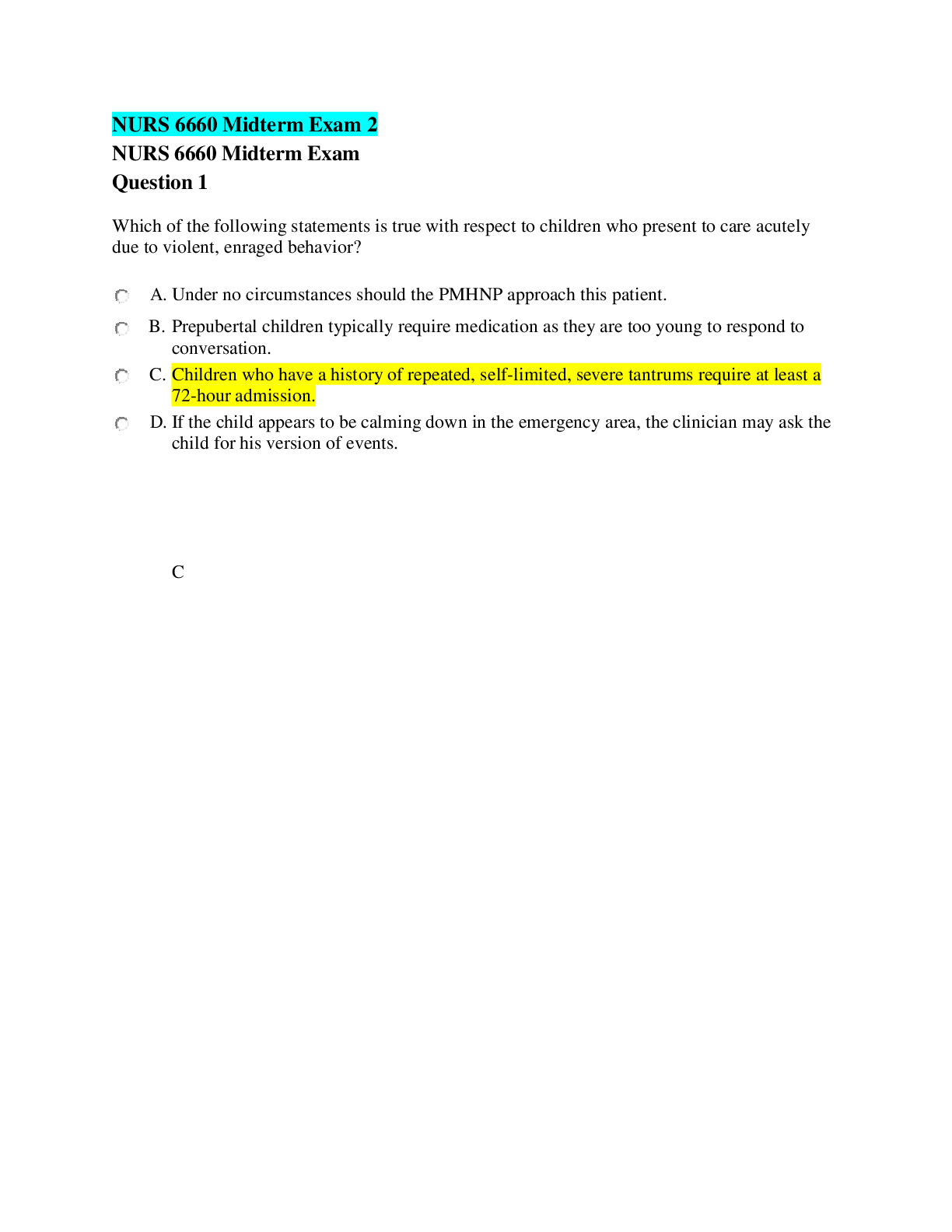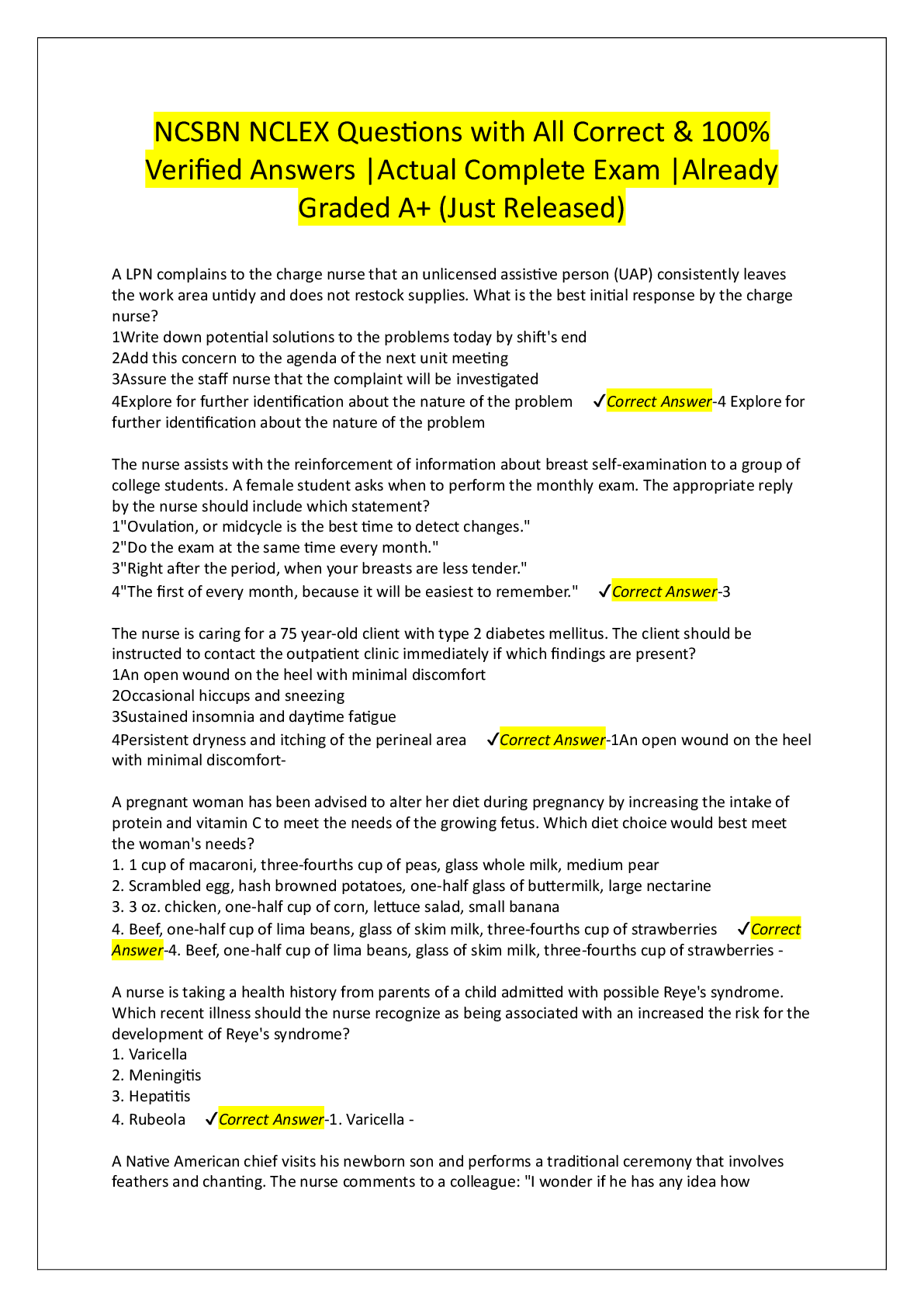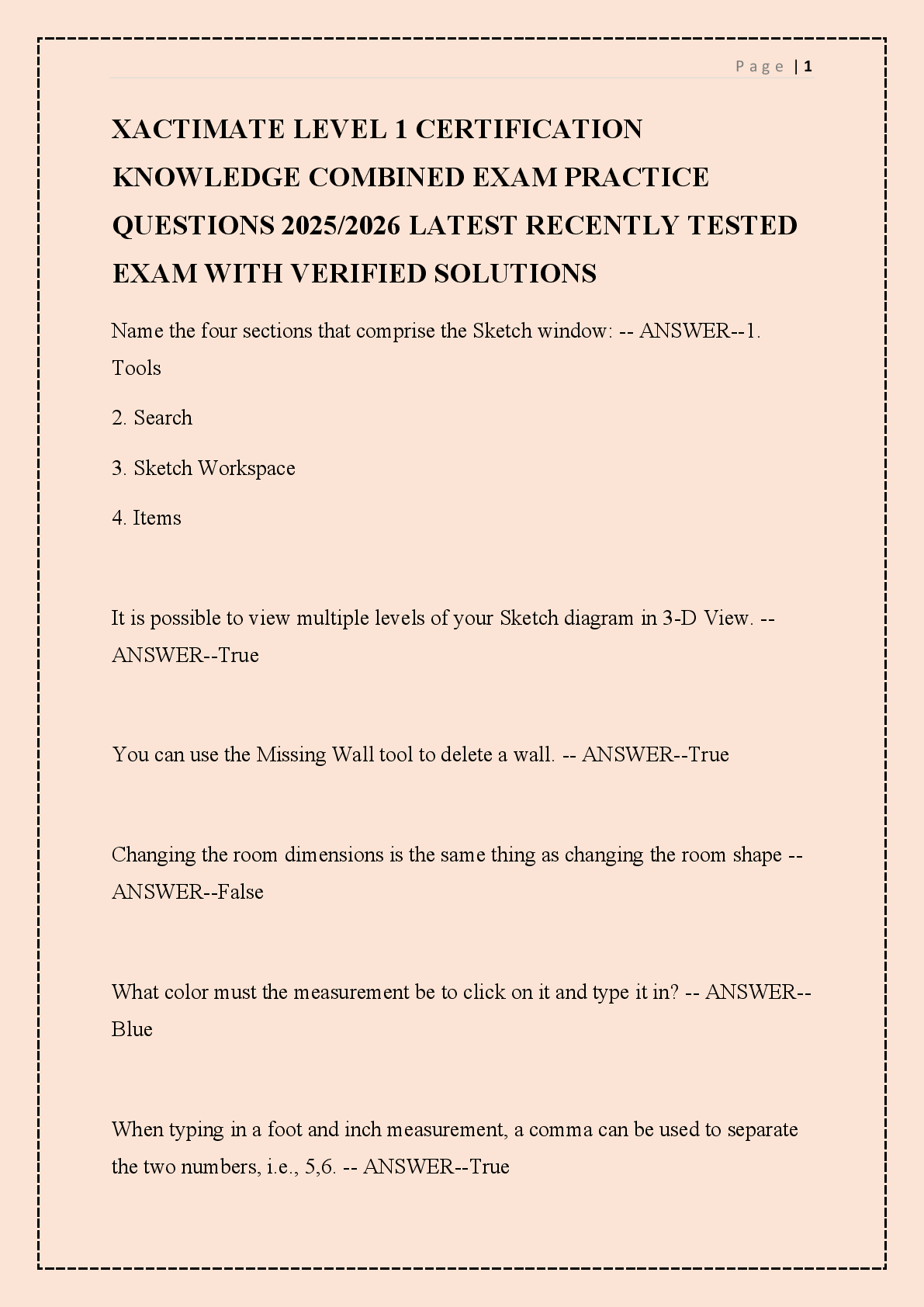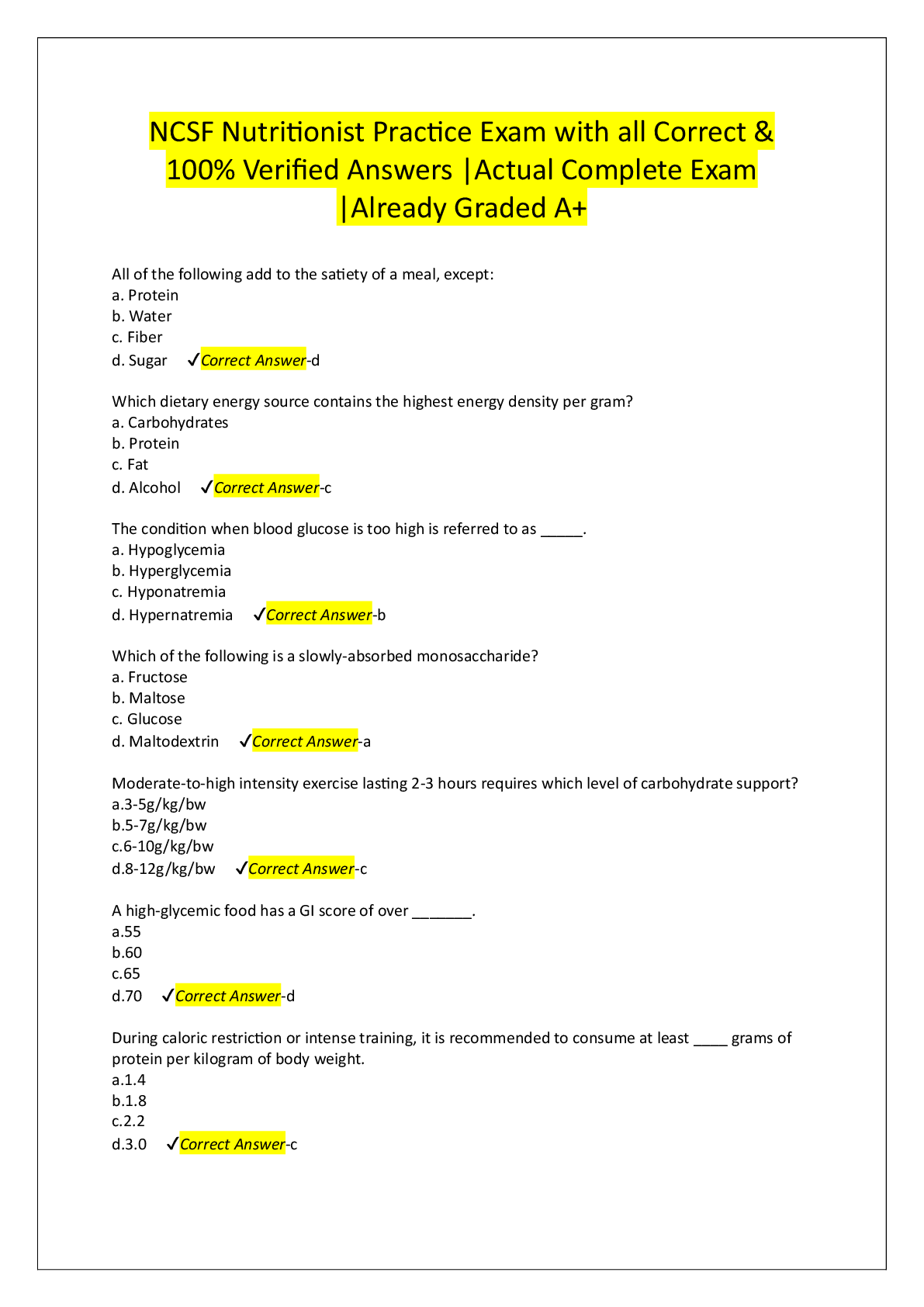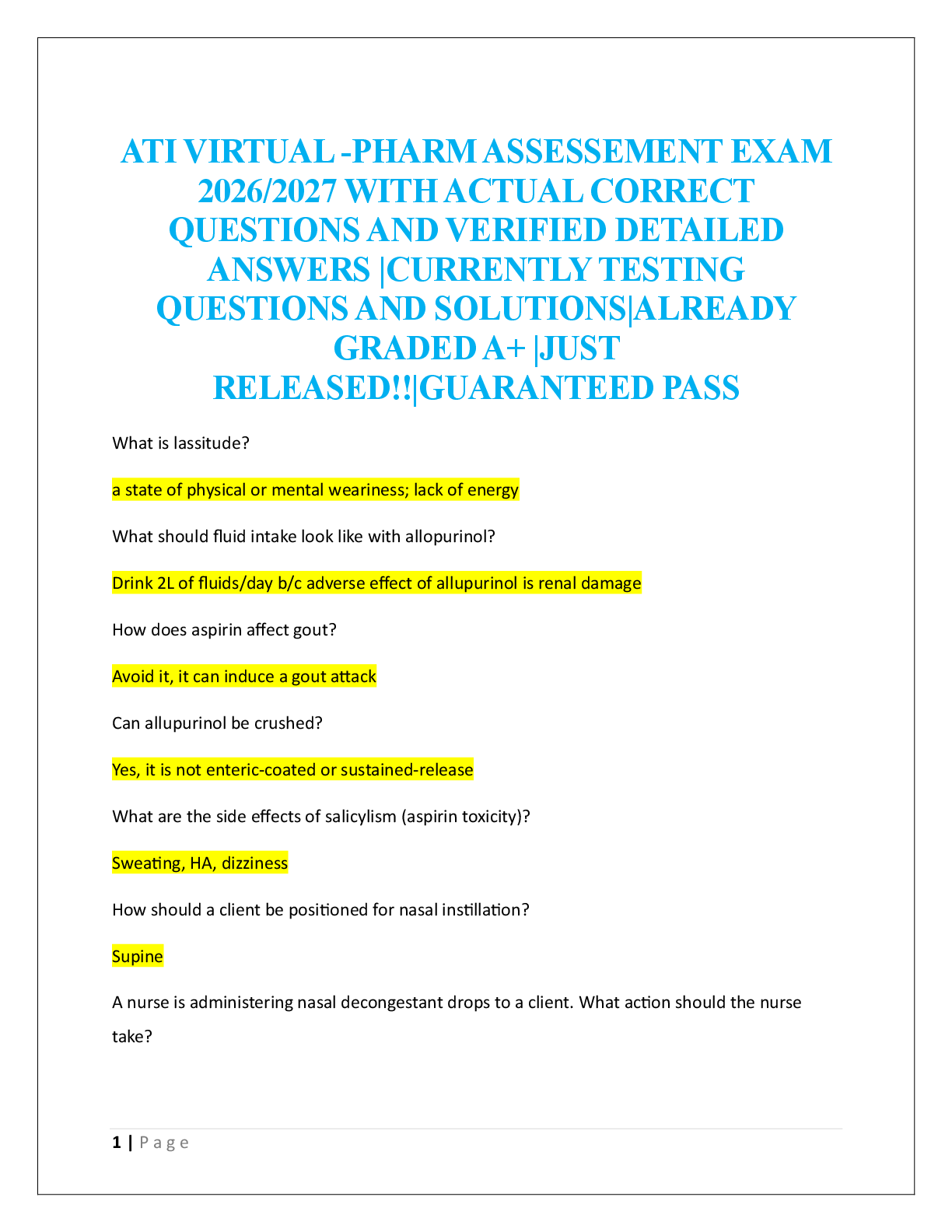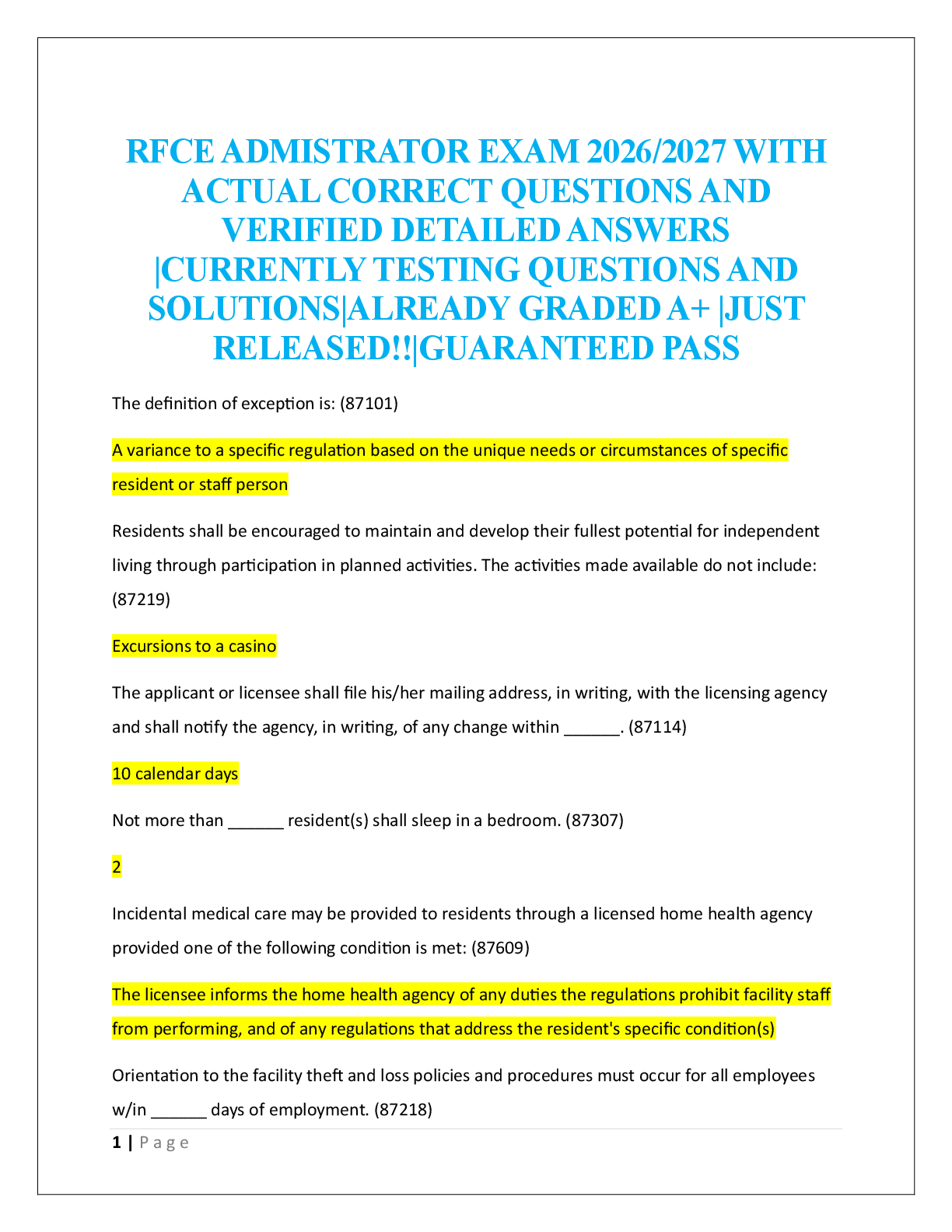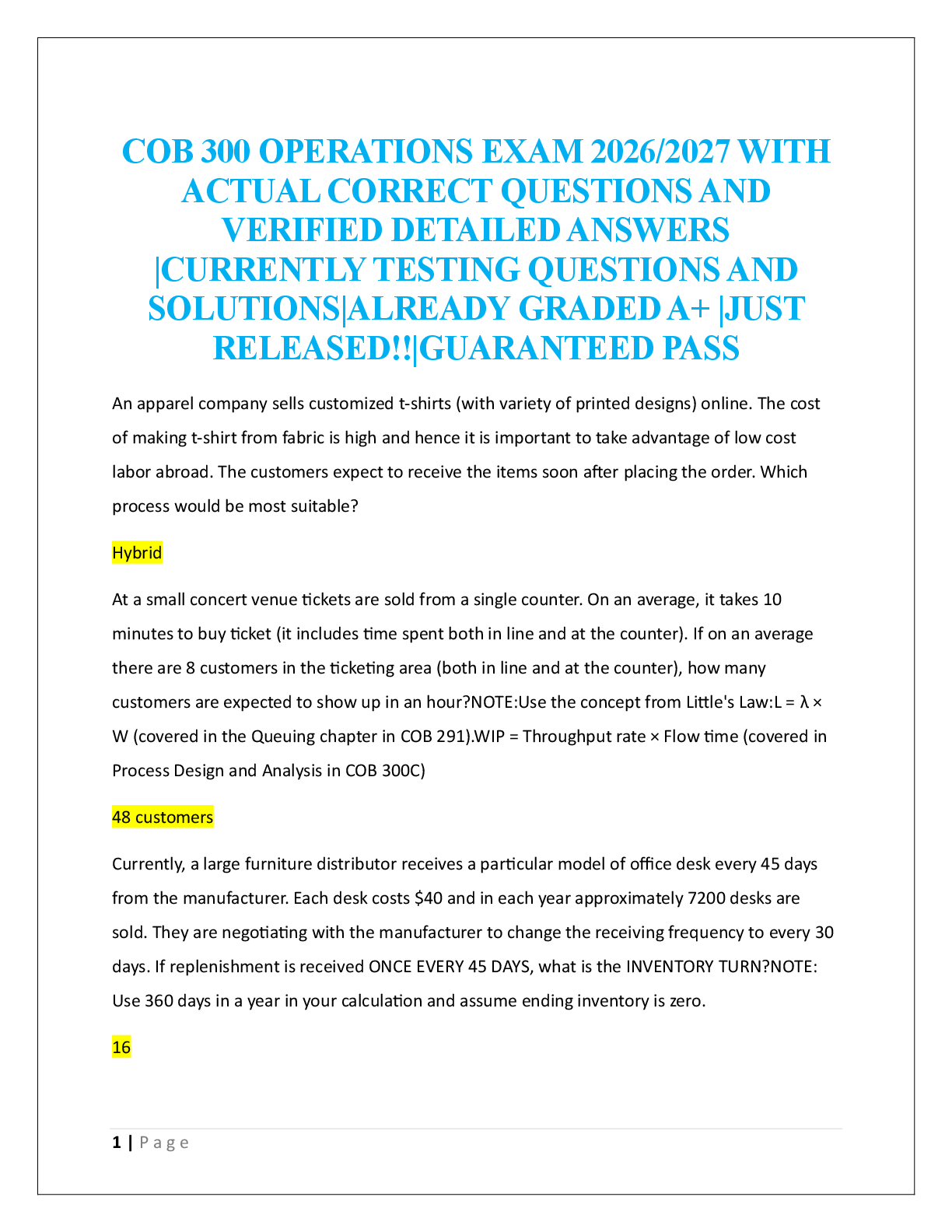Anatomy > EXAMs > BIOS 195 Final Exam : Complete solutions ( All answers Correct) DeVry University, New York. (All)
BIOS 195 Final Exam : Complete solutions ( All answers Correct) DeVry University, New York.
Document Content and Description Below
BIOS 195 Final Exam 1. Question (TCO1) Which of the following is an example of a positive feedback system in the human body? 2. Question (TCO1) Which of the following molecules contains the sugar de ... oxyribose? 3. Question (TCO2) Glucocorticoids, such as cortisol, are steroid hormones produced by the 4. Question (TCO3) Which of the following organelles is primarily associated with mitosis and meiosis? 5. Question (TCO3) Glands that have openings directly onto bodily surfaces are classified as 6. Question (TCO4) The digestion of carbohydrates into monosaccharides starts in the 7. Question (TCO4) Which of the following hormones are the main regulators of the basal metabolic rate (BMR)? 8. Question (TCO5) The site of production of blood cells is in the 9. Question (TCO6) The transmitter that is released at the neuromuscular junction of skeletal muscle fibers is 10. Question (TCO6) Muscle fatigue can be caused by 11. Question (TCO7) Which of the following is NOT a component of the peripheral nervous system? 12. Question (TCO7) The neuroglia that are specialized to produce the myelin sheath around axons in the peripheral nervous system are the 13. Question (TCO7) The stage of an action potential that is characterized by the activation of the sodium-potassium pump is the 14. Question (TCO7) A neurotransmitter that hyperpolarizes the postsynaptic membrane would be classified as a (n) _____ neurotransmitter. 15. Question (TCO7) A disorder in which an individual experiences sudden paralysis resulting from macrophage destruction of the myelin sheath around peripheral nervous system axons is called 16. Question (TCO7) Damage to the choroid plexus would interfere with 17. Question (TCO7) The cervical enlargement of the spinal cord contains neurons that supply the 18. Question (TCO7) Common effectors of autonomic reflexes include 19. Question (TCO7) Which of the following areas of the brain is sometimes referred to as the emotional brain? 20. Question (TCO7) The primary somatosensory cortex is located within the _____ lobe of the cerebral cortex. 21. Question (TCO7) The process in which the strength of a sensation decreases during prolonged stimulation is referred to as 22. Question (TCO7) Olfactory signals are transmitted to the cortex via the _____ cranial nerve 23. Question (TCO7) Accommodation for near vision involves changing the shape of the 24. Question (TCO7) The receptors for hearing are located on the 25. Question (TCO7) The structure that carries tears from a lacrimal gland onto the surface of the eye is called a 26. Question (TCO8) The type of protein that is most plentiful in blood plasma is called 27. Question (TCO8) The protein in red blood cells that is specialized to carry oxygen is called 28. Question (TCO8) The first phagocytic cells to arrive at a site of bacterial infection are the 29. Question (TCO8) Platelets are disc-shaped, formed elements in the blood that are generated by splintering a large cell called a _____ into about 2,000-3,000 fragments. 30. Question (TCO8) Oxygenated blood is delivered to the myocardium of the heart by the 31. Question (TCO8) Which of the following vessels carries blood with the highest concentration of oxygen under normal circumstances? 32. Question (TCO8) The P wave of an ECG is created by the electrical activity associated with 33. Question (TCO8) At a normal resting heart rate, each cardiac cycle lasts approximately 34. Question (TCO8) The smallest diameter blood vessels are 35. Question (TCO8) The baroreceptors involved in blood pressure regulation are located in 36. Question (TCO8) The lowest blood pressure typically occurs in the 37. Question (TCO8) Which of the following hormones influences blood pressure? 38. Question (TCO9) Which of the following structures in the respiratory system is commonly called the Adam’s apple? 39. Question (TCO9) The false vocal cords 40. Question (TCO9) Painful or labored breathing is referred to as 41. Question (TCO9) Which of the following factors affect the release of oxygen from hemoglobin? 42. Question (TCO10) The renal pyramids are located in the 43. Question (TCO10) The first portion of the renal tubule emerging from the glomerular capsule is the 44. Question (TCO10) The distal convoluted tubules empty directly into the 45. Question (TCO10) An increase in the osmolarity of body fluids due to dehydration is sensed by osmoreceptors in the _____, triggering the release of _____ from the posterior pituitary. 46. Question (TCO10) The initial trigger for the onset of puberty in both males and females is increased secretion of 47. Question (TCO10) Approximately 60% of the volume of semen is produced by the 48. Question (TCO10) All of the following are structures associated with the mammary glands EXCEPT the 49. Question (TCO10) Menstruation is directly caused by a decrease in the ovarian secretion of 50. Question (TCO10) The muscular structure that separates the uterine body from the vagina is the 51. Question (TCO7) Describe the process of neuronal impulse conduction in unmyelinated and myelinated axons. 52. Question (TCO7) Name and describe the locations and functions of the meninges. Explain the process of a spinal tap. 53. Question (TCO8) What are the main differences between the pulmonary and systemic circulatory systems? 54. Question (TCO9) Name and briefly describe the three basic processes of respiration. 55. Question (TCO10) Describe the differences between tubular reabsorption and tubular secretion. [Show More]
Last updated: 3 years ago
Preview 1 out of 3 pages

Buy this document to get the full access instantly
Instant Download Access after purchase
Buy NowInstant download
We Accept:

Reviews( 0 )
$12.00
Can't find what you want? Try our AI powered Search
Document information
Connected school, study & course
About the document
Uploaded On
Mar 26, 2020
Number of pages
3
Written in
All
Additional information
This document has been written for:
Uploaded
Mar 26, 2020
Downloads
0
Views
146



